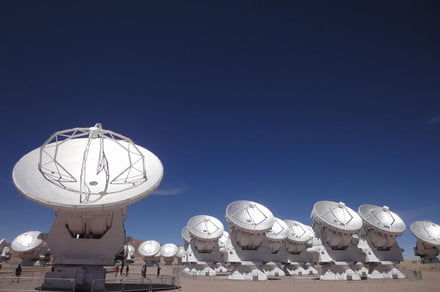Facilities hosting telescopes in the Chilean desert, including the world’s largest ground-based astronomical project, the Atacama Large Millimeter/submillimeter Array (ALMA), have been shut down due to the outbreak of coronavirus, officially called COVID-19.
The facilities located in the Atacama Desert include the Llano de Chajnantor Observatory, where ALMA is located, as well as the Paranal Observatory which includes the Very Large Telescope (VLT), and the La Silla Observatory and the Cerro Armazones Observatory.
The area is ideal for astronomical observation as it is at a very high altitude with nearly no cloud cover and extremely low precipitation, so it offers almost unobstructed views of the night sky all year round. When there is too much water in the atmosphere, it interferes with the collection of weak signals from deep space, so many telescopes are built in deserts or on high mountains which are very dry.
The observatories have now closed down due to the risk of spreading the coronavirus infection. This shutdown could have a significant impact on the field of astronomy as a whole. These facilities represent a significant chunk of international astronomy funding and produce a large amount of the data used across the field, so shutting them down will impact a large number of research projects. Some time-sensitive projects require observations during particular windows of time, which will now be missed.
“All the visiting projects of scientists who come to conduct observations, typically from abroad, during April and May were canceled,” Steffen Mieske, head of science operations at the European-run Paranal Observatory, said to Reuters. “We anticipate that a significant number of projects will be affected.”
The majority of the staff at the observatories have been sent home, though small teams will remain to oversee the maintenance of the scientific equipment. “A team continues working at the observatory to keep vital telescope systems operational and ensure that we are ready to restart operations whenever that is feasible,” Sean Dougherty, director of the ALMA telescope, said in a statement sent to Reuters.
ALMA has been responsible for recent findings into rarely-spotted medium-sized black holes, the dramatic events that can happen when two stars graze past each other and one of them dies, and the phases of life that young planets go through in their formation. The VLT is used for work such as hunting down habitable exoplanets, imaging dying stars, and observing the center of our galaxy in never-before-seen detail.

